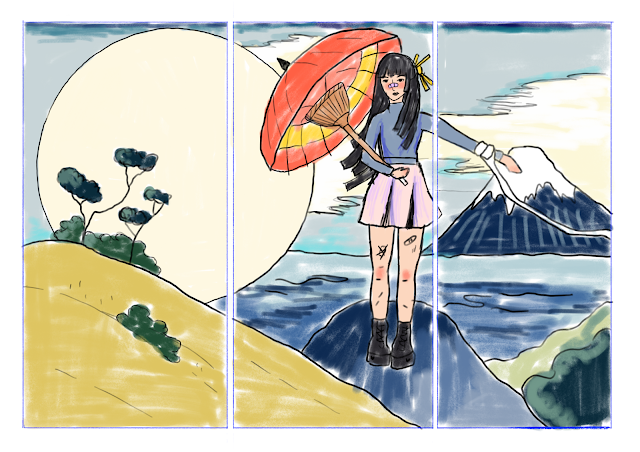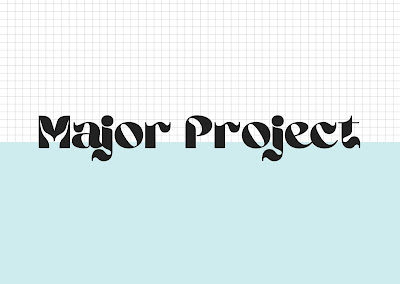Intercultural Design: Design process
04.01.2021 - 00.00.2021 (Week #1 -Week #7)
Seerat Tayyab Mukhtar Qureshi - 0345576 (BDCM)
Intercultural design
Lectures:
Week #7: Mr. Asrizal gave us a small briefing on how to proceed with our final design after the data collection. He mentioned we need to make sure to use our research effectively. Dr. Charles also reminded us of the importance of netnography and how to make the most of it.
Instructions:
Module Information Booklet
Design process
My group leader Emma said she liked my sketch and especially the partition idea.
Fig 1.0: My sketch
Emma and I then worked together to combine everybody's ideas into one sketch that follows our theme and has our intended message.
Fig 1.1: Combining everybody's ideas
Our group mates were happy with this composition so then Emma went ahead and did the line art.
Fig 1.2: Line art
We were constantly updating Miss Anis with our progress and implementing the feedback she was giving us. Emma sent me the line art and I had to do the base colouring. All our group mates uploaded the colour palettes they used so we could incorporate them.
Fig 1.3: Colour palettes
I started on the base colours
Fig 1.4: Flat colours
After doing the flat colours I showed it to my group mates and asked for their opinions on it. They all liked it so then I went ahead and added the shadows.
Fig 1.5: Shaded
The next step was for Emma to add the highlights and then show it to Miss Anis for feedback.
Fig 1.6: With lighting
Miss Anis was happy with our composition but she suggested we add a little bit more of a Japanese element to make it more Yamii Kawaii. Emma had the idea of adding Japanese patterns.
Fig 1.7: Final static piece
" The first one symbolises the beginning, because the pattern is considered a kamon pattern and we each have our own kamon pattern, so it defines who we are.
The second pattern is called asanoha, which is in the middle panel because it symbolises the way we have to take care of ourselves, it's usually a pattern that relates with babies and how we have to grow vigorously and without a lot of care, which explains the girl going through her problems on her own.
The third pattern is called shippo, which is represents harmony and peace, and in the way the girl is reaching for something people claim as evil, but it lets her express herself, maybe she will find peace within herself." - Emma
Miss Anis was happy with this so now we could move on to the motion part of the piece. Since we are going to be projecting the image we wanted it to move a bit so its more immersive and intimate.
Fig 1.8: Final animated video
Fig 1.9: Video Rationale
The next thing we had to do was compile this into a presentation to present to the lecturers on the final lecture. The slides include a video of the video projected on a wall.
Fig 2.0: Our final presentation slides
Feedback: Miss Anis gave us helpful feedback and insights throughout the entire 7 weeks. She helped us shape our research into and a design and then the idea of projecting it to emphasise our ideas. My group mates also provided feedback throughout to help each other and come to a final piece.
After presenting our final works to the lecturers they all really liked it and said we had done well. There were some suggestions that if there was more movement in our projection it would have made it very therapeutic. Overall we did well and really proud of our group!
Reflection: Working on this project has been an amazing experience I really enjoyed being a part of it and very grateful for my amazing and hardworking group mates especially the leader Emma who was very well fitted for the role to lead us. Our lecturers also helped us a lot especially since we could not travel they tried their best to still make it immersive for us. I hope one day we can actually travel and see Japan because we have a better understanding of their society now and it would be a priceless experience to see it in real life.










Comments
Post a Comment